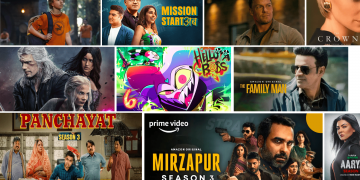Introduction:
The cinematic landscape is undergoing a profound transformation, with Over-the-Top (OTT) platforms playing a pivotal role in reshaping the way audiences consume content. As traditional cinema competes with the convenience and accessibility of streaming services, the dynamics of storytelling, film production, and viewer engagement are experiencing a paradigm shift.
- Direct-to-Digital Releases: One of the most significant impacts of OTT platforms on the film industry is the rise of direct-to-digital releases. Filmmakers, both established and emerging, are now opting to release their work directly on streaming services, bypassing the traditional theatrical model. This shift has democratized film distribution, providing a platform for diverse voices and stories that might not have found a place in mainstream cinemas.
- Changing Revenue Models:The traditional revenue model for films relied heavily on box office collections. However, OTT platforms have introduced a new revenue stream for filmmakers through licensing and subscription fees. This shift has prompted filmmakers to reconsider their strategies, focusing not only on theatrical success but also on creating content that resonates with streaming audiences.
- Cinematic Series and Anthologies:OTT platforms have blurred the lines between cinema and television by producing high-quality series and anthologies. Filmmakers now have the opportunity to explore storytelling in a more extended format, allowing for in-depth character development and intricate plotlines. This has led to the emergence of cinematic universes within the digital space, captivating audiences over multiple episodes or seasons.
- Global Accessibility and Diverse Content:One of the key advantages of OTT platforms is their global reach. Films and series on these platforms are not bound by geographical constraints, enabling creators to reach audiences worldwide. Additionally, streaming services are actively investing in diverse content, representing a wide array of cultures, languages, and perspectives. This inclusivity is fostering a more global and interconnected cinematic experience.
- Viewer Empowerment and On-Demand Viewing:OTT platforms empower viewers by offering on-demand access to a vast library of content. This shift from scheduled programming to on-demand viewing allows audiences to consume content at their own pace, leading to a more personalized and flexible cinematic experience. Viewers are no longer confined by showtimes; instead, they have the freedom to choose what, when, and how they watch.
- Challenges and Opportunities for Filmmakers:While the rise of OTT platforms presents numerous opportunities for filmmakers, it also comes with challenges. The crowded digital space requires creators to adapt their storytelling techniques to capture and retain audience attention. Additionally, the absence of a theatrical release may impact the visibility and prestige traditionally associated with cinema.
Conclusion:
As OTT platforms continue to redefine the cinematic landscape, filmmakers, audiences, and industry stakeholders are navigating uncharted territory. The changing dynamics offer exciting possibilities for diverse storytelling, global collaboration, and the democratization of film distribution. The intersection of technology and creativity in the realm of OTT platforms is not just altering how we watch films but is fundamentally transforming the art and business of cinema itself.






































